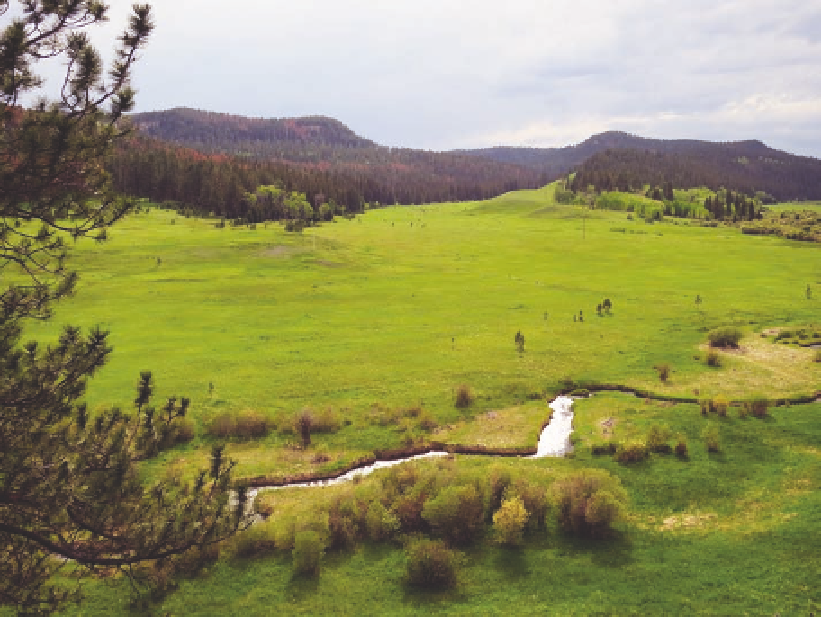Geoscience Reference
In-Depth Information
Fig. 16.8. Lt. col. George A. custer and his troops camped in
this meadow in 1874 (near the confluence of Silver creek with
castle creek about 1 mile north of Deerfield Reservoir on U.S.
Forest Service road 110). the meadow appears the same today
as it was then based on a comparison of this photo with pho-
tos taken by expedition photographer William H. illingworth.
However, the ponderosa pine forests in the background had
become more dense by the time this photo was taken in 2013.
A higher tree density could be attributed to natural forest
development after a fire that occurred a short time before
custer arrived, or, alternatively, more trees could be explained
by fire suppression during the twentieth century. notably,
mountain pine beetles are now thinning the forests, as shown
in fig. 16.9. Aspen groves can be seen on the edge of the
forest; castle creek flows through the foreground with vari-
ous kinds of willows along its bank, including Bebb willow.
the meadow is now dominated by introduced species (such
as timothy, smooth brome, and Kentucky bluegrass), along
with green needlegrass, stiff goldenrod, and numerous other
natives. illingworth's photos of this meadow and others can
be viewed in Progulske (1974) and Grafe and Horsted (2002).
elevation about 6,000 feet.
eastern parts of the Hills, mostly north of French creek.
common associates include hophornbeam, ponderosa
pine, green ash, American elm, and western snowberry.
on Mowry shale, bur oak forms a savanna with few
understory plants. Sometimes the oak occurs as a shrub
under ponderosa pine. Because of its ability to sprout,
oak can become the dominant tree if the pines are
killed by fire or harvesting. in fact, the re-establishment
of pine may be difficult in some areas because of intense
Aspen is the characteristic tree of the fourth type of
Hills on relatively moist sites. occasionally aspen grows
with paper birch or bur oak. the aspen woodland often
forms a narrow band between the pine or spruce forest
on the fringes of meadows (fig. 16.8). Associated species
include hazelnut, bracken fern, and wild sarsaparilla.
Aspen can invade meadows and grasslands if browsing
or grazing is not heavy. Aspen woodlands sometimes
give way to white spruce or ponderosa pine through
succession. As with oak, the aspen and birch are able
to produce root sprouts and regain dominance more
quickly than ponderosa pine after a fire or other distur-
bance (see chapter 11).
the grasslands of the Red Valley and the fringes of
the Black Hills and Bear Lodge Mountains are typical
mixed-grass prairie, dominated by blue grama, green
needlegrass, little bluestem, needle-and-thread grass,
sideoats grama, western wheatgrass, and a variety of

Search WWH ::

Custom Search